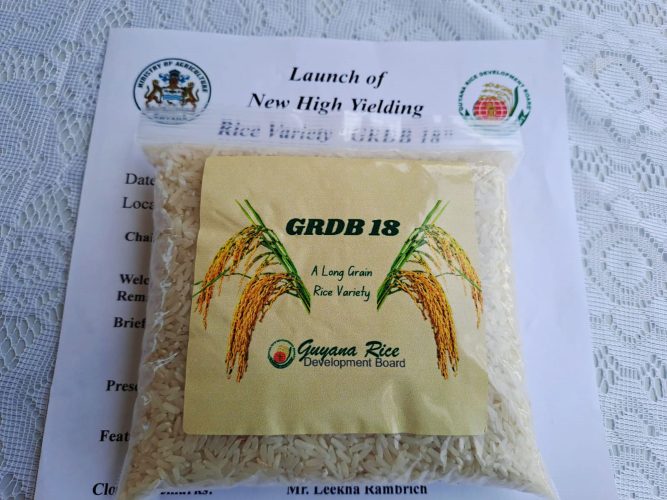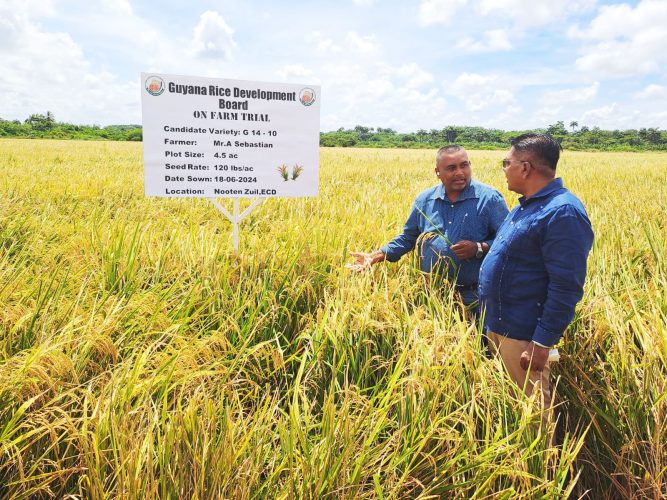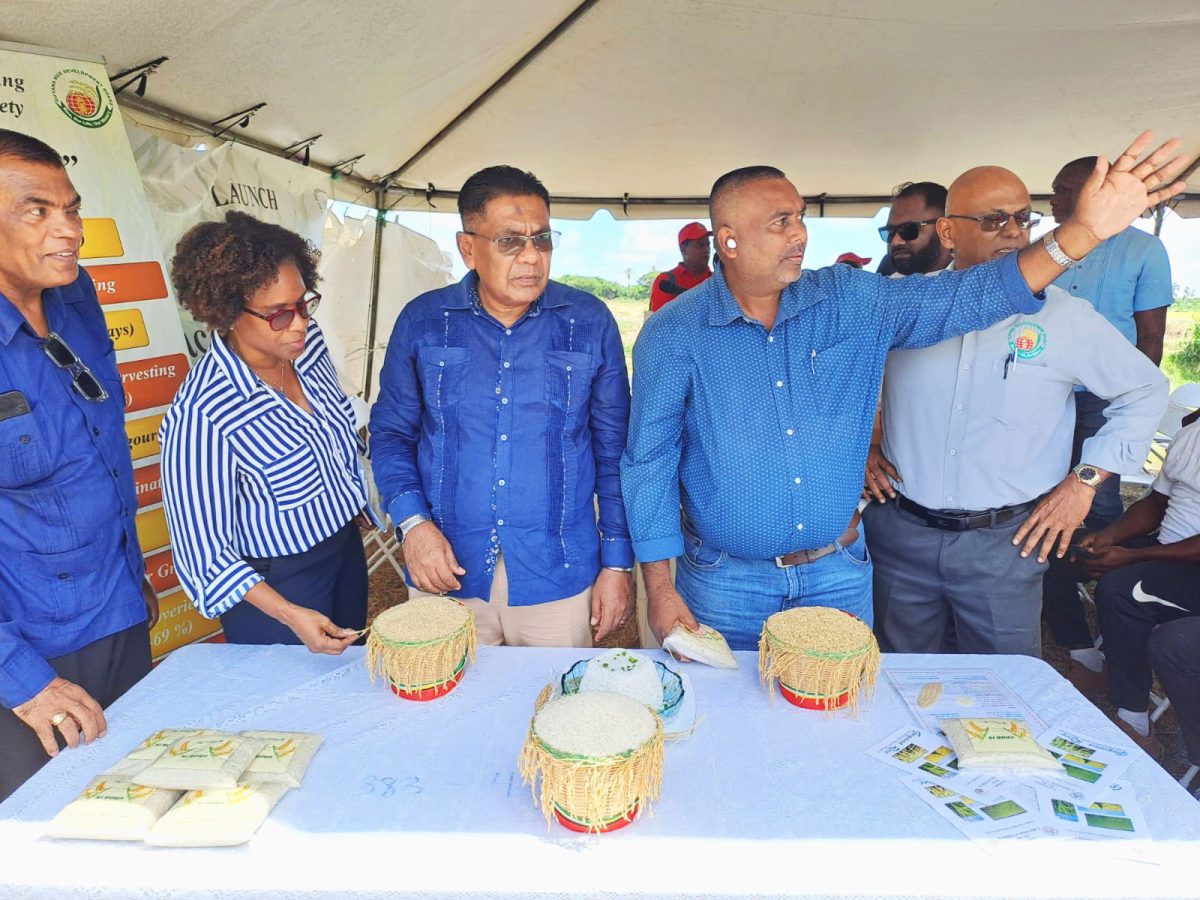The Guyana Rice Development Board (GRDB) yesterday unveiled its high-yielding rice variety GRDB 18, at Sebastian’s Farm, Nooten Zuil, East Coast Demerara.
With this new variety, the GRDB promised, farmers will see enhanced productivity and sustainability. However, with the introduction of this innovative strain comes an urgent call to action regarding pest management, particularly the control of paddy bugs during critical growth stages.
Agriculture Minister Zulfikar Mustapha who officially unveiled GRDB 18, said, “This new high-yielding variety is the third variety launched in less than four years and represents the government’s commitment to research and innovation to boost the rice industry.”


The GRDB 18 variety has been carefully developed to address the specific challenges faced by rice farmers. It has the potential to yield between seven to nine tonnes per hectare, positioning it alongside other well-regarded high-yielding varieties.
Additionally, it exhibits remarkable tolerance to waterlogging, a critical factor for maintaining high-quality harvests, and can endure delayed harvesting for up to 14 days.
General Manager of the GRDB Badrie Persaud stated that the Rice Board’s target this year is to produce 700,000 tonnes of rice. “… We are a very, very small player in the global production and the global trade of rice,” he noted. He added that the established acreage in the five regions of Guyana where rice was cultivated, 92,000 hectares.
Meanwhile, GRDB’s Chief Scientist Mahendra Persaud underscored the importance of vigilance in pest management, specifically focusing on the management of paddy bugs during the crucial phases from 5% heading/flowering to harvesting. He urged farmers to maximize the benefits of GRDB 18 while protecting their crops, conduct daily monitoring for paddy bugs to detect infestations early, use recommended insecticides for effective pest control, follow mixing and application guidelines for proper insecticide use, employ targeted application techniques for thorough coverage and pest eradication. With these guidelines, farmers can enhance their crop potential and contribute to the growth of Guyana’s rice industry.





